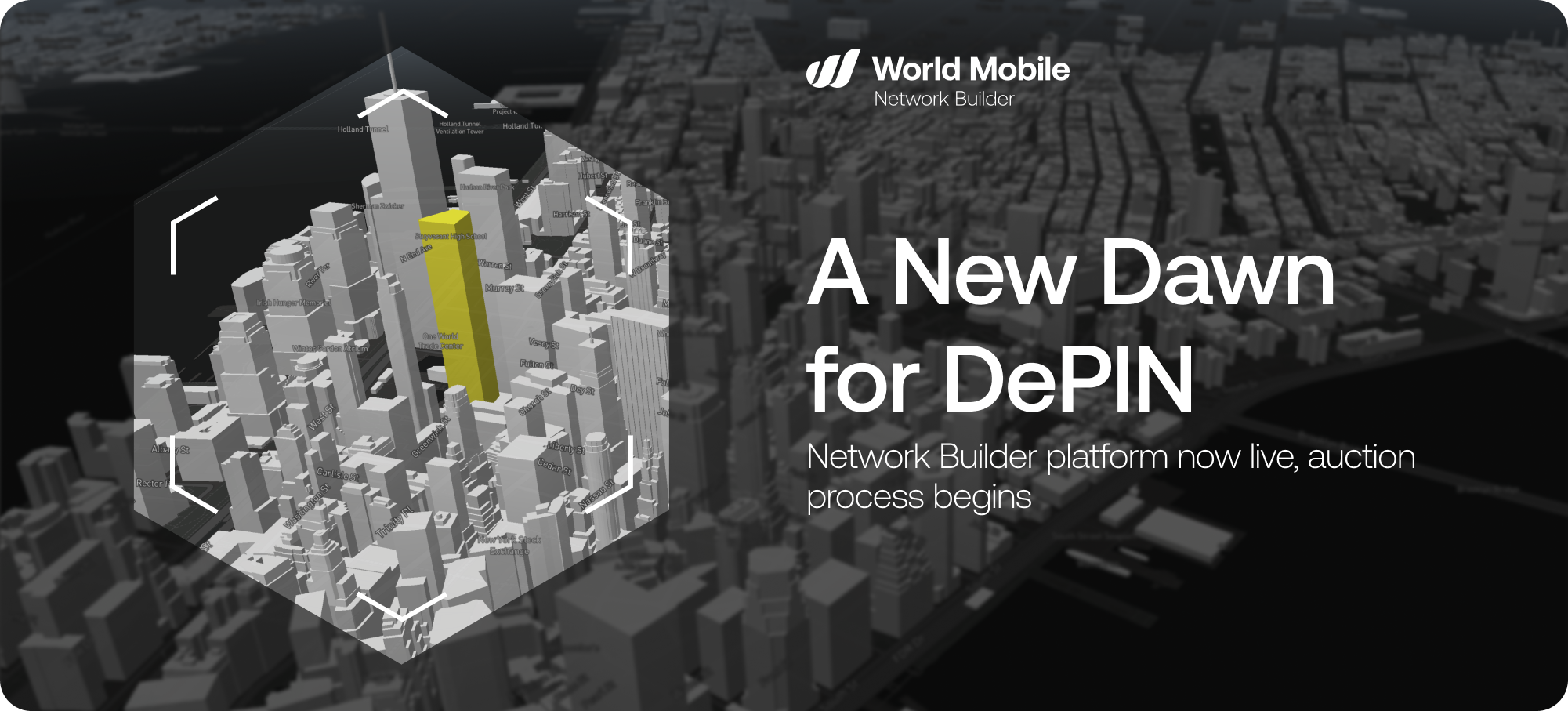It Started with a Promise
Decentralized Physical Infrastructure Networks began with a radical idea: a world where every user owns part of the infrastructure they depend on. In the telecom sector, communities would deploy their own nodes, earn by expanding coverage, and bring connectivity to life together. The vision promised inclusion, autonomy, and participation on a scale the world had never seen.
In many respects, DePIN is succeeding. Today, the World Economic Forum projects that DePIN could reach $3.5 trillion in value by 2028. The world is shifting toward a new kind of infrastructure economy, one that’s decentralized by design.
That said, every powerful idea evolves. DePIN has already proven that decentralized infrastructure works, and works well. But as participation grows, so does the need for greater agency and collaboration. Individual operators can build strong local networks, yet without broader alignment, their collective impact remains contained. DePIN now needs a framework that gives participants more agency in shared objectives: a structure that enables them to collaborate and grow their networks into operator-level enterprises.
Before we explore what that looks like, let’s understand how DePIN reached this stage.
Traditional Telecoms: A Sector Rife with Control
It helps to start with the landscape it was created to replace. Traditional telecom remains one of the most centralized industries on the planet, valued at nearly $2 trillion, with fewer than ten corporations capturing about 80 percent of profits, according to Intel Market Research.
That concentration of power has shaped everything from how networks are planned to who receives access. Decisions are driven solely by revenue, not by need. Connectivity expands only where it pays to do so. Billions are left unconnected, and tremendous opportunity remains unrealized
DePIN has emerged as a response to this imbalance, replacing top-down control with bottom-up participation. It gives people ownership over their connectivity, and a means to earn rewards for expanding coverage in their neighborhood.
Although the industry has achieved remarkable success over the last few years based on this simple, radical idea, it has now hit a checkpoint. The time has come for DePIN to make some fundamental changes so that its participants can realize their fullest potential and become worthy challengers capable of taking on Big Wireless.
The Missing Piece: Operator-Grade Scaling
Across the DePIN landscape, thousands of participants have purchased nodes, deployed hardware, and joined the effort to rebuild connectivity. The enthusiasm is real. Yet, there's a problem: any opportunity to scale their network exponentially depends on factors outside their control.
Coverage density, peer alignment, and regional collaboration all shape how efficiently a network performs. These variables effectively define success in DePIN, but few operators have the tools or agency to influence them. The result is a landscape full of activity but consistently falling short of strategic, coordinated growth.
At the center of this challenge lies a single opportunity: incentive alignment. The current ownership model gives people the right to build, but without coordinated structures, they’re not empowered to exercise this right to its fullest extent. The lack of shared goals and metrics, aligned deployment frameworks, and collaboration-driven reward structures limits what operators can achieve together.
The next chapter of DePIN cannot work this way.
The Blueprint that DePIN Needs
What we need is a blueprint that defines how decentralized network deployments can work together without losing their autonomy. Such a blueprint must enable infrastructure sharing between participants, align incentives, and ensure that value flows back to those who build. It must reward not only participation, but intra-project coordination.
The World Mobile Network Builder platform offers that blueprint. It introduces a collaboration layer designed to connect participants, align their goals, and measure growth transparently. Within this system, every participant’s progress can be measurably and deliberately linked to another participant’s actions, allowing operators to influence the pace and direction of their growth. Collaboration becomes a visible, trackable part of the process, not an afterthought.
By giving builders access to shared data, structured tools, and cooperative frameworks, the Network Builder platform turns isolated deployments into a unified grid of progress. Each operator contributes to a foundation that grows stronger with every addition, creating a system that scales through cooperation rather than competition.
This is both an ambitious leap forward and a return to the roots. This is where DePIN has never gone before, yet it’s exactly where it was meant to go all along.
The Network Builder platform is approaching its official launch. Follow our social channels for updates and insights as we bring this new model to life.
The next chapter of DePIN begins with a transformation of collective belief into measurable momentum. Together, we will ensure that DePIN remains unstoppable.
.png)

.png)
.png)
